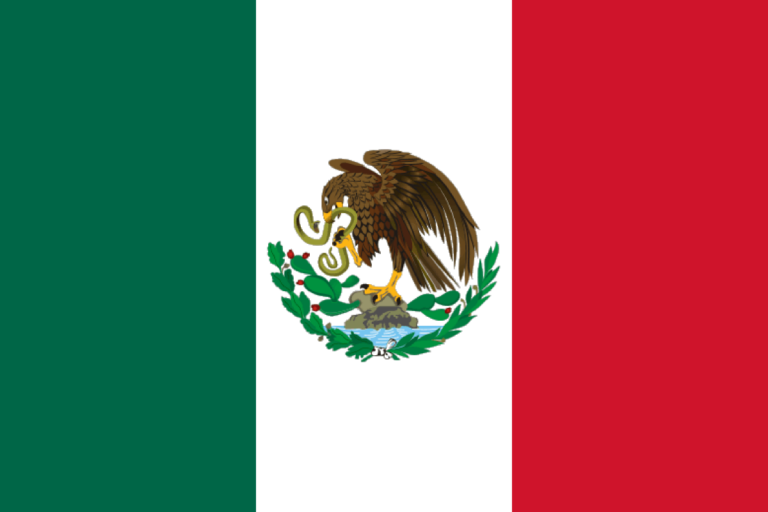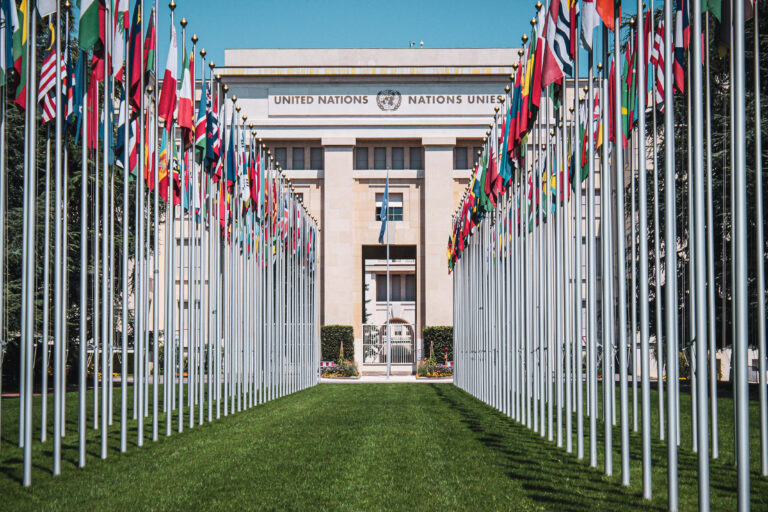Lester Brown, President of the Worldwatch Institute and professional alarmist, simply cannot admit he is wrong. At November’s Food Summit, Brown once again warned of imminent food shortages and impending disaster unless families worldwide stop having babies. What is needed, he claimed, is for all of us to send a one-word missive to the UN Population Fund (UNFPA) crying “Help!” But are low world grain stocks and China’s growing grain imports portents of disaster, as Brown claims, or just another population control scam?
Brown began his career as an agricultural analyst with the United States Department of Agriculture, even working for a time on the staff of the U.S. Secretary of Agriculture. But with the publication of By Bread Alone, his 1974 book which predicted (surprise!) global food shortages and famine, Brown moved from respected analyst to population control activist.
Brown on the record
How can you tell an activist from an analyst? One way is by the biases, narrow agenda, and selective use of data he uses. Another way is by his record. While analysts can be wrong, they quickly correct their errors. Activists are often consistently wrong.
That’s Brown. Every time the world has seen a blip in food prices or a slight glitch in grain production, Brown has seen it as a harbinger of the end. He breathlessly announces that crippling food shortages and devastating famines are upon us. Only when grain production rebounds — increases over the long term average 1.7 percent — or food prices continue their long-term fall, does he fall silent for a time.
In By Bread Alone, he gave four reasons for pessimism: l) a leveling off of world grain production, 2) the approaching limits to agricultural technology, 3) the effects of global cooling, and 4) environmental degradation, especially soil erosion.
He has been proven wrong on all counts. Instead of having food shortages, the world today has more food and, while we have not eliminated hunger, more food security than ever before in human history. There are 30 percent more calories per person available in the Third World than in 1960, and many more of those calories come from higher quality food items like meat, fruit, and vegetables. Agricultural technology continues to advance, and soil erosion has been largely controlled. The hysteria over global cooling has vanished, to be replaced by an equally wrongheaded and equally hysterical environmentalist frenzy over global warming!
Brown was wrong about food prices too. Instead of spiraling upwards, out of reach of the poor, the real price of food is the lowest in history. Grain prices, for example, are down by more than half since the end of WWII.
The newest scam
Although wrong on all counts, By Bread Alone was a commercial success. Brown belatedly realized that bad news not only sells newspapers, it sells books. It also has incredible fund raising and media potential. With the doomsday scenario of By Bread Alone as his model, Brown went into the business of gloom and doom forecasting full time, setting up his Worldwatch Institute. He gambled that the media would largely ignore his miserable forecasting record, and opt instead for the sensational story. He has been proven right time and time again.
In Rome Brown announced for the umpteenth time that food shortages and high prices will soon be upon us. He cited two reasons for the impending food crisis: low world grain stocks and China’s shift from a net grain exporter to a net grain importer. As I will show, however, Brown’s pessimistic conclusions are unwarranted, a result of the omission of important facts and the manipulation of the data.
Low Grain Stocks?
It is true that the world’s grain stocks hit a record low in 1995. They dropped to an estimated 46 days of consumption, the lowest level since the early 1970s. But contra Brown, this was not due to long-term factors like population growth or lower crop yields, but rather to an unlikely combination of bad weather and bad government policy.
World grain production was markedly lower in 1994 than in preceding years because of bad weather in key grain growing areas. The 1994 American feed grain harvest, for example, came in at only 210 million metric tones, down from 285 metric tons the year before. More importantly, budgetary pressures led both the US and the European Union (EU) intentionally to reduce their grain stocks. Throughout the eighties the US held 80–200 million tons of grain per year in carryover stocks and the EU held 45 million tons. In the 1990s, both lowered their holdings — the U.S. to only 50–70 million tons per year and the EU to only 20 million tons.
Then in 1995, despite already low world grain stocks, the U.S. Department of Agriculture idled 7 percent of U.S. corn acreage. The European Union compounded this mistake by pushing millions of acres into expensive “biofuels” (oilseed crops for diesel fuel production) to reduce “surplus” grain production. All of these acres could and should have been in food production to help meet demand and rebuild stocks. Because they were taken out of production, world grain stocks fell to record lows in 1996.
The future looks bright for rebuilding grain stocks and meeting the world’s food needs. The 1996 grain harvest looks solid, with higher-than-expected harvests in North America. Higher grain prices have induced farmers around the world to plant more acres to grains and oilseeds, and to increase fertilizer use and other inputs. Crop yields around the world continue to rise faster than population growth. Grain stocks will rebuild quickly.
China as Grain Importer?
Brown’s “analysis” of China even more clearly reveals his inbred pessimism. In 1995, for the first time in decades, China imported sizable quantities of feed grains. Claiming that this represents a fundamental turning point in world agriculture, he predicts that China will soon be forced to abandon efforts to remain self-sufficient in grain and import increasingly large amounts. He asserts further that the rest of the world will be unable to meet this increased demand, resulting in soaring world grain prices and catastrophic food shortages.
It is hard to believe that any agronomist, which is what Brown started out as, would deliberately ignore the reality that modestly higher food prices will inevitably lead to higher farm output. His population control agenda has forced him to deny fundamental economic principles, not to mention the creative power of the human mind.
Loss of Cropland?
Brown claims that China’s ability to meet its rising food needs will be limited in two ways: 1) China will lose a large amount of cropland to factories, roads, and other non-agricultural uses as its economy grows, 2) efforts to increase crop yields will largely fail, because China’s yields are already high and there aren’t any technological breakthroughs on the horizon.
On the first point, Brown uses the experience of Japan, South Korea and Taiwan to model how much cropland China should expect to lose to industrialization and urbanization. Since each of these countries lost between 40 to 50 percent of its grain acreage as it industrialized, Brown predicts that China will lose a similar percentage. This assumption is seriously flawed for a number of reasons.
Japan is a relatively small archipelago which had little arable land to begin with. Comparing Japan’s loss of farmland to China is like comparing the development of Rhode Island to Texas. (Never mind that for the last twenty years, Japan has idled significant tracts of rice paddy in an effort to cope with overproduction.)
In Taiwan and South Korea, the reduction of grain acreage did not mean that the fields themselves were lost to agriculture. Most were planted to other crops, while others were put to other farm uses, such as hog and poultry production. If grain prices increased enough, much of this land could be shifted back into grain production. While the amount of acreage planted to grain crops in China is likely to drop some in the coming years, only a small percentage will be permanently lost to urbanization. Much of the land will simply be planted to other, higher-value crops. What acreage is lost to grain production will be easily compensated for by higher yields and moderate imports of feed grains.
China’s Crop Yields?
Brown’s assessment of China’s current and potential crop yields is also off the mark. He knowingly uses flawed Chinese land estimates in his “analysis.” China agronomists know that Chinese farmers systematically underreport their holdings in order to evade taxes. The data suggest that the official estimate of agricultural acreage is too low by at least a third, and perhaps by as much as 40 percent. Brown’s use of these estimates makes it appear that China has less land, and therefore less agricultural potential, than it actually does.
Even more importantly, the low-ball land figure overstates current Chinese crop yields. Officials from China’s State Statistical Bureau have admitted to USDA analysts that their grain yield figures are far too high. While they expend great effort to accurately estimate total crop production, they are less interested in getting accurate yield data and admit that agricultural acreage is substantially underreported. China’s crop yields are, therefore, currently overestimated by a whopping 30–45 percent!
As a former agronomist, Brown ought to know that there is plenty of room for yield improvement in China. But as a population control activist, he has a problem. For if crop yields in China rise even modestly, his disaster scenario for China collapses like the house of cards it is. And so he clings to the flawed land estimates.
Only time can prove Brown wrong on crop yields, but he is already demonstrably wrong in dismissing, as he does, the need for high-yield farming. Even if the world’s population stopped growing tomorrow, continued economic growth in the developing countries would place demands on the world’s food supply, since people eat better as they become more affluent. To feed 6 billion people the plentiful diet that only the wealthy nations now enjoy, we might need to double world food production. World population will peak at 8 to 9 billion, necessitating further increases in production.
We must prudently invest in agricultural research to continue raising the efficiency and productivity of our farms and farmland. Those investments must occur now, as improved crops, livestock and farming systems take years and even decades to develop.
The good news is that humanity will use its innate intelligence and market prowess to feed itself both adequately and economically. In the years to come, as world population growth levels off and crop yields continue to rise, even Lester Brown will have to face reality. But do not expect him to go quietly into that good night. Activists will only grudgingly give up the inflammatory rhetoric which has brought them fame, fortune, and power.
Alex Avery is a research associate for the Fraser Institute in Canada.










